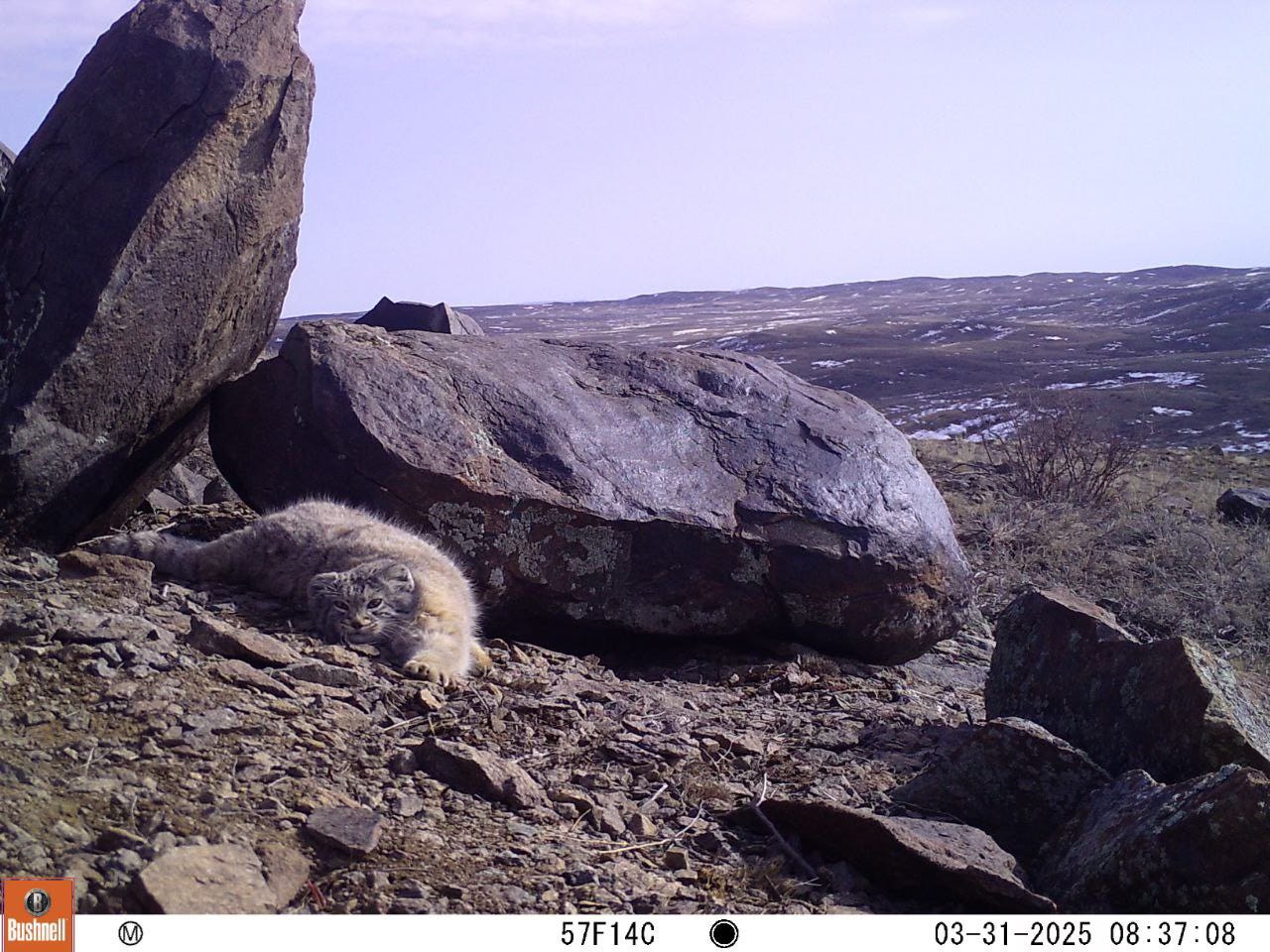Take two: Will Mongolia's grumpiest cats show themselves?
I will find you, manuls.
By Dan Fletcher
I’m back on the road today, starting the long journey west toward Mongolia and my second attempt this year to spot manuls (also known as Pallas’s cats) in the wild.
The trip’s made a bit easier for us Americans by United adding a summer route from Tokyo to Ulaanbaatar — even remote Mongolia is getting on the well-trodden tourist map. And hopefully my task is made easier by the fact that these grumpy wildcats are a bit more stationary, just emerging from their winter dens alongside a crop of new kittens.
Here’s a recap of our manul adventures and the news so far:
Manuls are the world’s hardiest and fluffiest wildcats, capable of withstanding the bitter cold of -40° Fahrenheit that sweeps across the winter steppes they call home. But that fortitude is their primary defense — with short, stubby legs and smaller size (about the same as a house cat), these cats are ambush predators who depend on surprise in order to secure a meal.
In February, I traversed 2,600 kilometers around eastern Mongolia with Russian-Ukranian scientist Vadim Kirilyuk, checking his network of remote camera traps and looking for signs of how the manuls were overwintering. We didn’t find much. Without fresh snow on the ground, these cats — who have huge natural ranges — were nearly impossible to track, and even the camera traps held little evidence of cats. I’m hoping to meet up with Vadim again this trip and get an update on how the Mongolian population is doing.
In April, for International Pallas’s Cat Day, we raised more than $7,000 for manul conservation and monitoring through the Manul Working Group. And in a recent update from central Kazakhstan, the MWG shared that the manul population appeared to be thriving. On the 29 camera traps they checked, manuls appeared on more than half of them — fueled by a strong population of pikas, their natural prey.
This trip, I won’t be driving around as much — I’ll be stationed out of a remote ger complex known as Manul Camp, which is in range of several den sites where manuls have been spotted. I’ll join up with Cat Expeditions again — Sebastian and Rachel also guided me through Estonia’s lynx adventure — and they’ve had lots of success finding manuls last summer.
We’ll be situated in camouflaged photo blinds, situated at some distance from the dens to minimize disturbance and allow us to see as much natural activity from the cats as possible. If all goes well, I should be able to observe kittens at several different stages of development — from taking their very first peek out of the den, to taking their first steps out into the wild world. Fingers crossed, and more updates later this week.
Quick links! 🔗
From the annuls of total insanity: A hotel in China's mountains was using endangered red pandas as living alarm clocks, bringing the animals into guest rooms for "wake-up calls" until wildlife officials shut down the practice this week. The Lehe Ledu Liangjiang Holiday Hotel near Chongqing offered guests the chance to cuddle with these critically endangered animals (fewer than 10,000 remain in the wild) as part of a "red panda-themed holiday." The scheme only came to light after British tourists posted a viral video of their furry wake-up call, drawing the attention of forestry officials who couldn't believe what they were seeing. While hotel staff claimed the pandas were borrowed from a local zoo and properly cared for, the practice violates China's own 2018 ban on close contact activities with protected wildlife. It's a reminder that even in their native range, red pandas face threats from human exploitation — though at least this time, the viral nature of social media worked in the animals' favor.
The world's cleanup crew is disappearing, and that's bad news for all of us. A new study reveals that 36% of the 1,376 species that eat carrion are either threatened with extinction or declining in numbers — and it's the big, efficient scavengers we're losing fastest. Vultures in India have crashed by up to 99.9% since the 1990s, while sharks, hyenas, and other apex scavengers face similar declines worldwide. The problem? Smaller scavengers like dogs and rodents are moving in to fill the void, but they can't process nearly as much carrion and they're far more likely to spread diseases to humans. When vultures disappeared from parts of India, Ethiopia, and Zimbabwe, dog populations exploded, bringing with them increases in rabies, leishmaniasis, and other deadly diseases. It's a stark reminder that even the least charismatic animals — the cleanup crews working behind the scenes — play crucial roles in keeping ecosystems and human communities healthy.









So cool! Fingers crossed, may you have the blessing of the manuls!
Looking forward to your updates! Stay safe and hopefully you can see them!